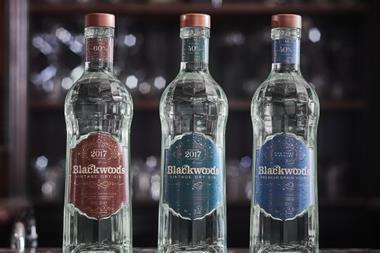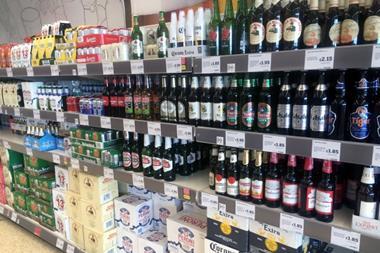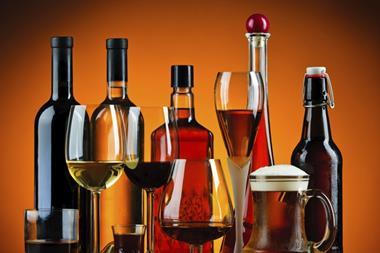A pioneering policy with the potential to save thousands of lives or a depressing example of a resurgent temperance lobby flexing its muscles? Whatever you think of minimum unit pricing (MUP), the clampdown on cheap alcohol is finally on its way to Scottish booze aisles.
With Scotland’s path to the controversial policy cleared, the rest of the UK could soon follow in its footsteps. Wales is readying its own Bill, and the Northern Irish chief medical officer has this week come out in favour of extending minimum pricing across the Irish Sea.
But the Supreme Court’s decision that minimum pricing can go ahead north of the border raises as many questions as it answers for the drinks industry: who is going to profit? How’s it going to affect booze brands? And can it really remedy Scotland’s persistent booze bothers?
The Scottish government claims enforcing a minimum price of 50p per unit would lead to 121 fewer deaths per year by its 20th year, and 2,000 fewer hospital admissions over the same period. A 50p minimum would mean a 3-litre bottle of 7.5% abv cider cannot be sold for under £11.25, a bottle of 12% abv wine for under £4.50, and a 70cl bottle of whisky for less than £14.
That’s a serious hike in revenue for Scottish retailers, which sold approximately 17% more alcohol per adult than in England and Wales in 2016, according to government statistics.
“There’s a common misconception that this is going to operate like a tax,” says Katie Kinloch, professional support lawyer at Addleshaw Goddard. “But it’s not. Retailers will have to charge a minimum price with no obligation to account to anybody.”
Good news for the supers’ coffers, then. But Kinloch warns they may come under pressure from both shoppers and suppliers if they are seen to be profiting from the law. “Major producers in particular are likely to seek to renegotiate trading arrangements in order to preserve the existing commercial balance. But suppliers don’t have that much leverage.”
And if retailers do decide to renegotiate arrangements to account for new prices, there’s the logistical difficulty of constructing national arrangements to reflect a Scottish law.
“It’s a matter of how long it takes for extra cash to get evened out in the supply chain,” says Kinloch. “They need to create some kind of structure that reflects minimum pricing across the national supply chain. Very powerful manufacturers obviously can’t abuse their dominant position thanks to competition laws, and similarly, they can’t tell retailers how much to sell their booze for. And they can’t dictate margin.”
Own-label products are most likely to be affected by minimum pricing, Kinloch says, as they typically attract a lower price. “There may be a ripple effect on prices for premium products as retailers and premium brand owners seek to differentiate themselves.”
‘Real danger’ for mid-market brands
Indeed, there is “a real danger for mid-market brands that have premium marketing and a lot of money spent on them” according to one industry source. “All the brands underneath could suddenly disappear from the market because the grocers can’t uphold a cascading level of pricing,” he says, which could severely disrupt their positioning.
“If a value vodka has to go up to £12 a bottle, mid-tier brand owners will think ‘now I have to go up to £14’. So do they invest loads more money or does the brand owner go into negotiations with the retailer? But they can’t dictate price. So what happens to them? I don’t think suppliers will just happily smile as this happens. It’s relentless.”
That’s not to suggest all suppliers oppose the Bill. Far from it. Cider giant C&C Group, for instance, strongly welcomed last week’s news, calling it “a responsible and proportionate measure that will effectively target widespread access to alcohol that is very cheap, relative to its strength”.
Minimum unit pricing would have “an immediate and lasting impact on public health policy in Scotland”, the group said, adding it hoped the ruling would strengthen the case for legislation in Ireland and Northern Ireland.
It could also have a lasting impact on where Scots buy their booze. Sources suggest it’s possible minimum pricing could shift customers away from large retailers, giving smaller retailers, who don’t typically have the financial clout to run loss leaders and deep discounts on alcohol, a leg up on the competition. “When the supers can’t run those kinds of promotions, smaller retailers get an advantage,” adds Kinloch.
However, retail consultant John Butler worries minimum pricing could drive problem drinkers into the hands of illicit booze sellers. “Simply increasing price will drive the purchase of high-abv liquid underground,” he says. “Reputable retailers in Scotland are not the problem - it will be the less scrupulous operators who will take advantage.”
Drinkers who consume big volumes of high-abv alcohol, he suggests, don’t necessarily buy it in Tesco, Asda or Sainsbury’s. “They will continue to use the black market for their supply, which will expand and continue to avoid the duty and taxes required to actually deal with the cultural issue in Scotland.”
He adds: “If Scotland is serious about tackling this huge cultural issue, a strategy of education from schools - and parents - supported by investment in extra sports and social activities - would be far more effective at tackling the root causes over the long term”.
The next step
Much of this is, of course, still speculation. The next step for Scotland will be a government consultation, after which the minimum price will be decided. A fresh Business & Regulatory Impact Assessment will be carried out.
In a statement at Holyrood this week, Scottish health secretary Shona Robison said ministers were proposing to implement minimum unit pricing (MUP) of 50p by 1 May 2018, and would be unveiling a consultation paper next week. But Christopher Snowdon, director of lifestyle economics at the Institute of Economic Affairs, believes a considerably higher price could be on the cards. “I’d be surprised if it’s 50p,” he says. “I think it would probably be 60p. I think in Scotland they’ll be talking pretty seriously about 60p and I suspect they will say 50p’s too low. And, to be fair, that would be justifiable because when they first started talking about a 50p minimum price, inflation hadn’t taken off as much as it has in the last decade.”
Either way, with so much uncertainty around whether or not minimum pricing will actually work, the Scottish Bill carries with it a ‘sunset clause’, by which if the law is deemed not to have worked after five years it must be scrapped.
Westminster will no doubt be keeping a close eye on how things unfold north of the border. David Cameron might have scrapped plans to enforce minimum pricing in England in 2012 after facing fierce a pushback from the drinks industry, but Theresa May’s regime will no doubt now face renewed pressure to reconsider the issue. “Health lobbyists have all said “now on to England” in their responses to what’s happened in Scotland,” says The Grocer’s source. “They are always ready to move on their next target. Next they will come for marketing and advertising regulations.”
Minimum pricing in England certainly doesn’t chime with the prime minister’s particular brand of conservatism, but her weakened position after the summer’s general election could feasibly leave her open to pressure from other forces in parliament.
Best get the beers in before it’s too late, then.



















No comments yet